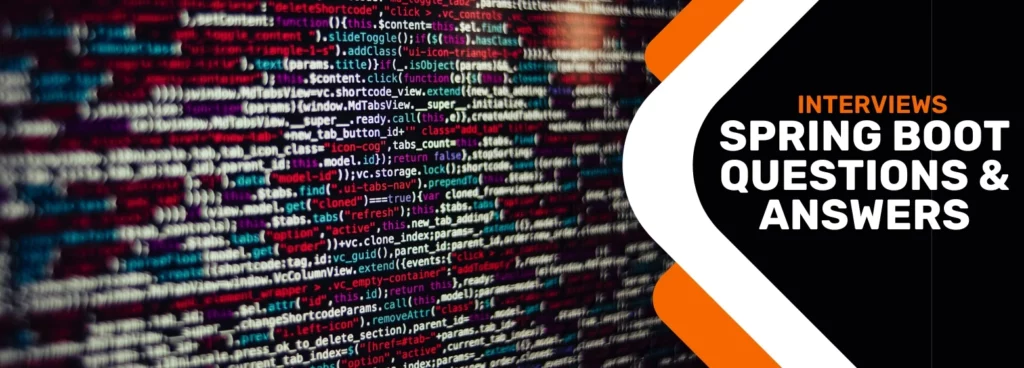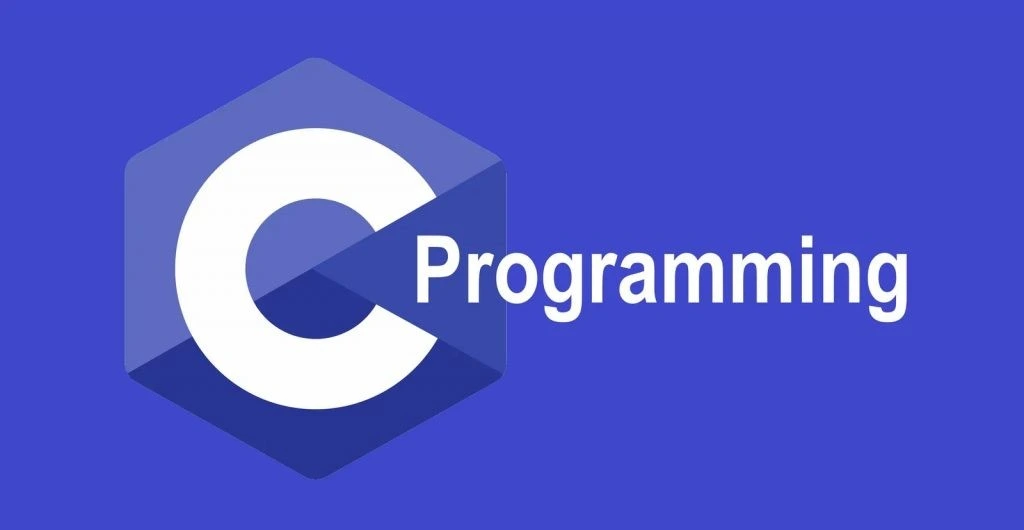Spring Boot Interview Questions and Answers 2023

Prepping for an interview is never easy, especially when technical questions are involved. While no one other than the hiring manager can predict the exact questions that will show up in your next Spring Boot interview, HackerTrail has compiled some of the most popular entries for easy reference.
Easy-Level Spring Boot Frequently Asked Interview Questions and Answers
- What is Spring Boot?
- What are the Benefits of Spring Boot?
- What is a Swagger in Spring Boot?
- What are Profiles in Spring Boot?
- Spring Boot is Considered a Java Microservice – What is It?
- How to Resolve White Label Error Page in Spring Boot Application?
- What are the Different Types of Dependency Injections?
- What are the Different Environments for Enterprise Application Development?
- What is the Difference Between RequestMapping and GetMapping?
- What are the Spring Boot Properties?
- What is Thymeleaf?
Medium-Level Spring Boot Frequently Asked Interview Questions and Answers
- How Does Spring Boot Handle Security?
- What are the Steps to Deploy Spring Boot Web Applications as JAR and WAR files?
- How Do You Define an ELK Stack?
Hard-Level Spring Boot Frequently Asked Interview Questions and Answers
- How to Write Integration Tests?
- What are the Required Dependencies to Start the JPA Application and to Connect the In-Memory Database H2 with Spring Boot Application?
- What is a Custom Starter and How Do You Create It?
- What Commands Will Run and Stop a Spring Boot Executable Jar File?
- Show the Different Ways to Change the Port of the Embedded tomcat Server in Spring Boot
Conclusion
Easy-Level Spring Boot Frequently Asked Interview Questions and Answers
1. What is Spring Boot?
Spring Boot is a Java-based framework used to develop microservices. It is built on top of the popular Spring Framework and comes with a considerable number of default configurations and external libraries. It provides a simplified way to create and deploy a production-ready application, using a considerable number of default configurations and external libraries. Development time is minimised since the amount of code required to write has been significantly reduced.
2. What are the Benefits of Spring Boot?
Spring Boot is effectively a combination of different systems – the lightweight Spring application framework, configuration annotations, and embedded HTTP server.
One of the Spring Boot’s best features is its capability to build fast, secure, and responsive web applications easily. Control managers will have a full configuration and programming model that can be used for Java applications.
These are the other key benefits of Spring Boot:
- It can provide pinpointed‘started’ POMs to Maven configuration.
- Ability to embed Undertow, Tomcat, or Jetty into Spring Boot.
- Automatic setting for spring whenever possible.
- Faster development with Spring Boot providing sensible defaults that allows developers to focus on writing business logic rather than concerning themselves with configurations, helping to reduce the time spent on development.
- Easier configuration with a range of options such as externalised configuration, which allows developers to configure applications without modifying the code. This comes in handy when it comes to microservices-based architectures.
- It provides an embedded web server which lets developers create self-contained applications that are able to run as standalone JAR files, simplifying deployment as it removes the need for a separate application server.
- Stronger security and robustness of an application, complete with features like health checks, metrics and logging.
- Seamless integration with other popular Spring Framework projects like Spring Data and Spring Security.
- Large and active community which lets developers tap on an abundance of resources, support and third-party libraries when building and maintaining their applications.
- A large ecosystem of tools and plugins for enhancing the development experience and increasing productivity, such as Spring Initializr, Spring CLI, and Spring DevTools to name a few.

3. What is a Swagger in Spring Boot?
Swagger is an open-source framework used to design, document and test RESTful APIs.
Swagger can be utilised to detail and record RESTful APIs in an easily understood form. As the data is still comprehensible to machines, this creates an ideal scenario where junior testers and developers can still use Swagger without difficulty.
Another function of Swagger is to let API users sync with remote services with minimal implementation hassle. The entire process is meant to be easy to develop and integrate.
4. What are Profiles in Spring Boot?
Profiles is a Spring Boot setting that enables users to link components and beans to either the Development (dev) profile, Production (prod) profile, or the Test profile.
5. Spring Boot is Considered a Java Microservice – What is It?
Java microservice is an architectural concept where large applications are created as a collection of small loosely coupled functional modules that are independently deployable, testable, and maintainable by a small team designed around business capabilities.
6. How to Resolve White Label Error Page in Spring Boot Application?
A 404(page not found) error is common in Spring Boot.
Most of the time, one of these 3 ways will resolve the problem:
- Custom error controller – Implement the ErrorController interface (provided by Spring Framework) and then override its getErrorPath() so that you can return a custom path whenever the error occurs.
- Display custom error page – Create an error.html page and place it into the src/main/resources/templates path. The BasicErrorController of Spring Boot will choose this file by default.
- Disable the white label error page – this is the easiest solution whereby you can toggle server.error.whitelabel.enabled property to “false” in the application.properties file.
7. What are the Different Types of Dependency Injections?
There are two types of dependency injections in Spring Boot:
- Constructor based dependency injection: one class object supplies the dependency of another object.
- Setter-based dependency injection: the framework inserts the primitive and string-based values using setter method.
8. What are the Different Environments for Enterprise Application Development?
The four different environments are Dev, QA, Stage, and Production.
9. What is the Difference Between RequestMapping and GetMapping?
The @GetMapping is shortened notation of @RequestMapping(method=RequestMethod.GET).
Both RequestMapping and GetMapping support “Consumes.” with the two options being Consumes=”text/plain” and Consumes={“text/plain”,”application”};
10. What are the Spring Boot Properties?
Spring Boot properties are specified inside your project's application.properties file. These properties have default values but you can also use them to set values for server-port number, database connection configuration etc.
11. What is Thymeleaf?
Thymeleaf is a server-side Java template engine for web applications. Its main benefit it to allow easy-to-use, natural-looking templates for your web application.
Thymeleaf can be integrated with the Spring framework and is ideal for almost all HTML5 Java web applications.
Medium-Level Spring Boot Frequently Asked Interview Questions and Answers

12. How Does Spring Boot Handle Security?
Spring Security – the built-in security support – can be configured using the security.basic.enabled property, which enables basic authentication for the application. An alternative to configure Spring Security is by using Java configuration or XML configuration.
13. What are the Steps to Deploy Spring Boot Web Applications as JAR and WAR files?
To deploy a Spring Boot web application, add the following plugin in the pom.xml file:
<plugin>
<groupId>org.springframework.boot</groupId>
<artifactId>spring-boot-maven-plugin</artifactId>
</plugin>
Once the plugin has been added, you will get a JAR executing the package phase. This JAR will contain all the necessary libraries and dependencies required, plus an additional embedded server.
Note: The packaging element in the pom.xml file must be set to jar to build a JAR file as below:
<packaging>jar</packaging>Similarly, if you want to build a WAR file, then you will mention
<packaging>war</packaging>
14. How Do You Define an ELK Stack?
The ELK Stack is made of three open-source products:
- Elasticsearch: It is a NoSQL database based on the open-source search engine called Lucene.
- Logstash: A data processing pipeline tool which accepts inputs from sources, performs different transformations, and exports the data to targets.
- Kibana: Kibana takes info from Elasticsearch and helps users to visualize data using graphs and charts.
Hard-Level Spring Boot Frequently Asked Interview Questions and Answers

15. How to Write Integration Tests?
You must have an ApplicationContext to run integration tests.
Thankfully, Spring Boot provides a special annotation for testing — @SpringBootTest. This annotation then creates an ApplicationContext from configuration classes indicated by its classes attribute.
16. What are the Required Dependencies to Start the JPA Application and to Connect the In-Memory Database H2 with Spring Boot Application?
The in-memory database uses system memory for data storage rather than disk space, making it convenient when you do not require data stored in a physical memory. Examples of in-memory databases include Apache Derby, H2, and HSQLDB.
As seen below, these are how dependencies between the H2 database and spring-boot-starter-data-jpa are configured:
<dependency> <groupId>org.springframework.boot</groupId> <artifactId>spring-boot-starter-data-jpa</artifactId> </dependency> <dependency> <groupId>com.h2database</groupId> <artifactId>h2</artifactId> <scope>runtime</scope> </dependency>
The parameters found below have been added to the application.properties file as a configuration for the purposes of connecting to an in-memory store with a username as sa and an empty password:
spring.datasource.url=jdbc:h2:mem:sampledb spring.datasource.driverClassName=org.h2.Driver spring.datasource.username=sa spring.datasource.password= spring.jpa.database-platform=org.hibernate.dialect.H2Dialect
Furthermore, spring boot has two additional properties to manage the H2 console: enable/disable database trace logs; and remote access to the H2 console. This is done by adding the following in the application.properties file:
spring.h2.console.settings.trace=false spring.h2.console.settings.web-allow-others=false
17. What is a Custom Starter and How Do You Create It?
A custom starter in Spring Boot is a pre-configured set of dependencies that can be used to simplify the setup of a new project. To create a custom starter, set up a new Maven project with a specific group and artifact ID.
Next, define the dependencies and configurations that you want to include in your starter and use the @ConditionalOnClass annotation to modify it.
18. What Commands Will Run and Stop a Spring Boot Executable Jar File?
Open up a cmd or shell window command, and enter
$ java -jar myproject-0.0.1-SNAPSHOT.jar
To stop the command, use Ctrl+C

19. Show the Different Ways to Change the Port of the Embedded tomcat Server in Spring Boot
The embedded tomcat server default port 8080 can be changed by adding this into the application.properties file:
server.port=8081
There are additional ways to change the tomcat port, such as the following:
- application.yml file
- application.properties
- EmbeddedServletContainerCustomizer interface
- WebServerFactoryCustomizer interface
- Command Line parameter
Conclusion
There are numerous questions an interviewer might ask you about Spring Boot, but this interview guide will give you adequate preparation for the more commonly asked questions in Spring Boot.
If you need help preparing for other? top interview questions in ReactJS, we also have a guide over here.
Be sure to sign up as a member on HackerTrail to receive the latest interview tips and tricks to help you secure your dream job.
Other Backend Technology Interview Questions and Answers
C Programming Language Interview Questions | PHP Interview Questions | .NET Core Interview Questions | NumPy Interview Questions | API Interview Questions | FastAPI Python Web Framework | Java Exception Handling Interview Questions | OOPs Interview Questions and Answers | Java Collections Interview Questions | System Design Interview Questions | Data Structure Concepts | Node.js Interview Questions | Django Interview Questions | React Interview Questions | Microservices Interview Questions | Key Backend Development Skills | Data Science Interview Questions | Java Spring Framework Interview Questions.



